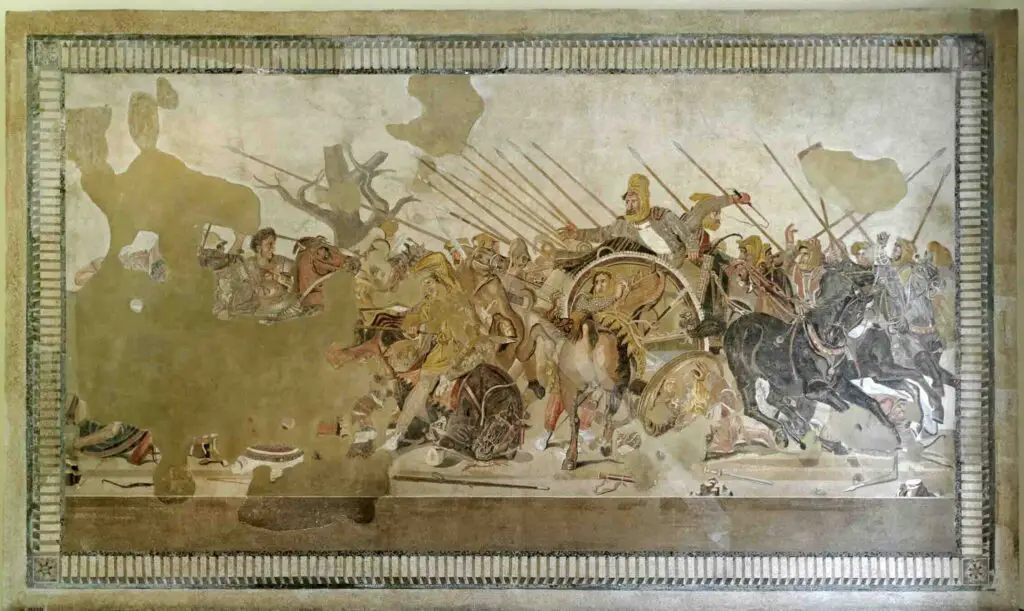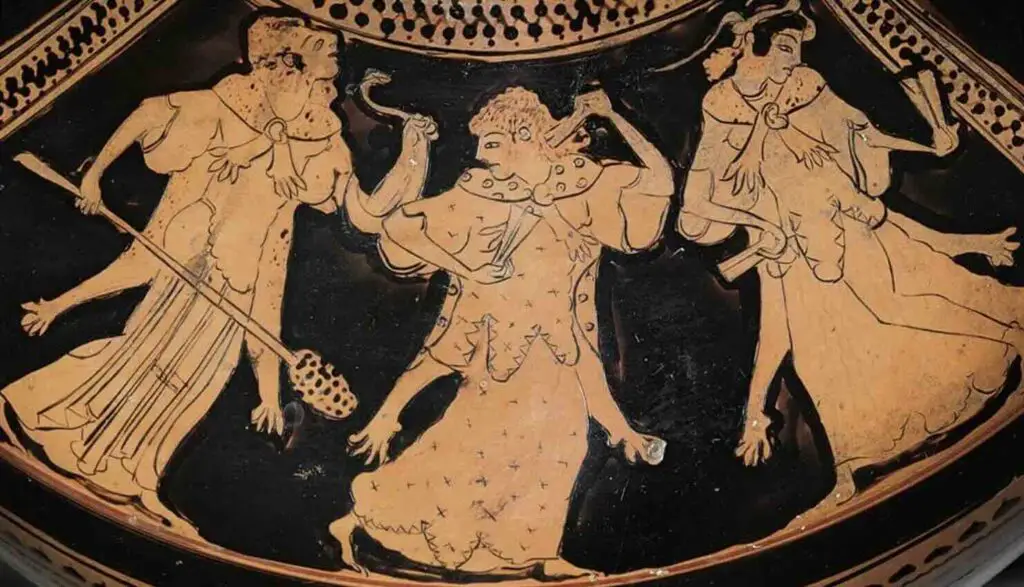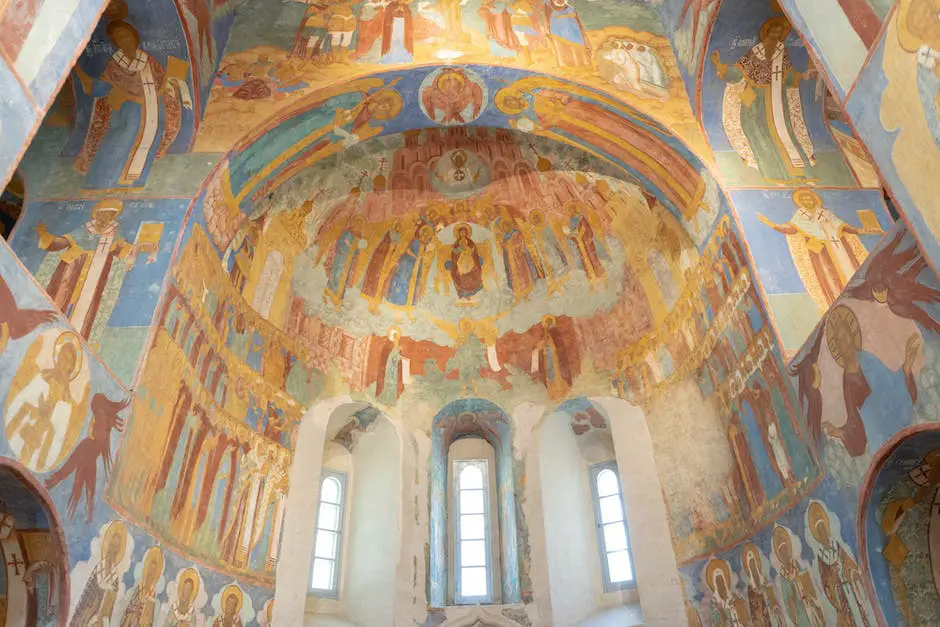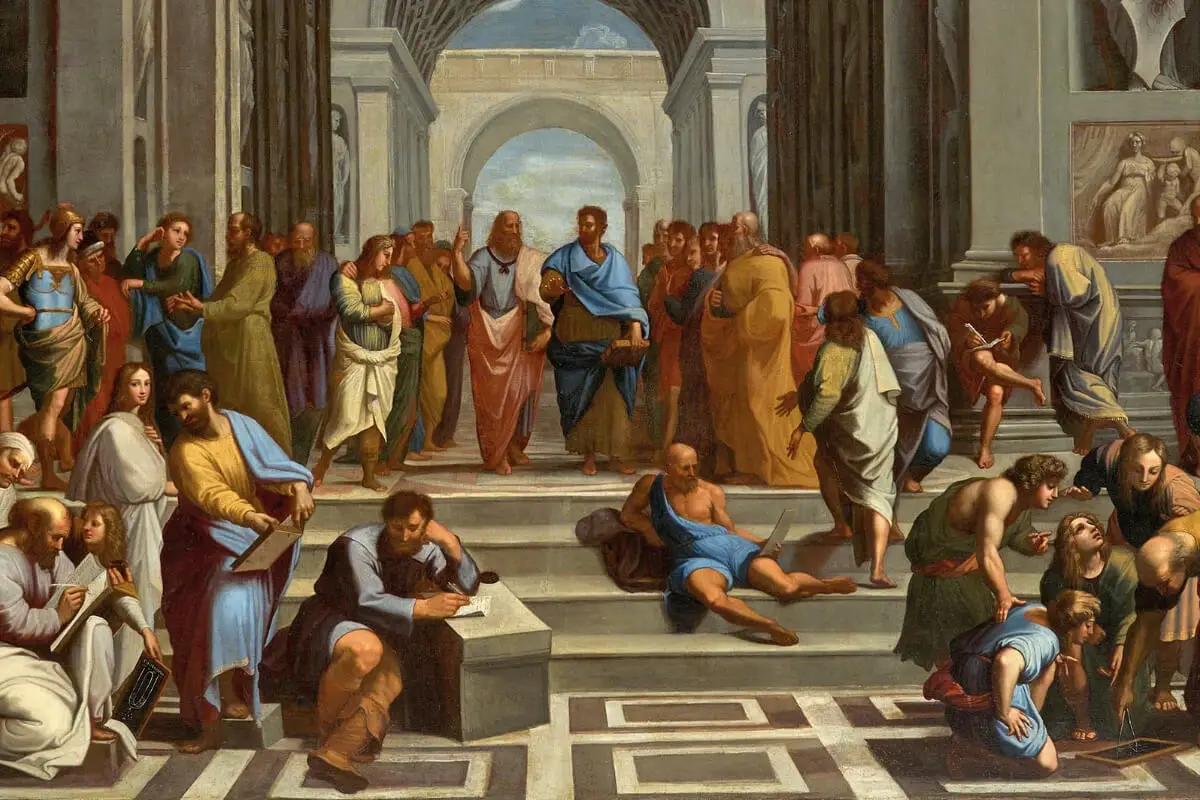The artistic legacy of ancient Greece has had profound and lasting effects on the world, marking the beginning of Western civilization’s profound engagement with visual representation. Imprint on the history of art is indelible.
With a focus on the ancient Greek painters, we immerse ourselves in a timeline suspended between the simplicity of prehistoric art and the sophistication of Roman frescoes, tracing the evolution of techniques and themes that echo through the corridors of the art world to this day.
Table of Contents
- Overview of Ancient Greek Painters
- Understanding the Techniques of Ancient Greek Painters
- Impact of Social, Political, and Cultural Themes in Ancient Greek Art
- Preservation and Legacy of Ancient Greek Paintings
- Related Questions
Overview of Ancient Greek Painters
The Indispensable Painters of Ancient Greece: Distinct Mastery of a Revered Art
In human history, an unarguably significant era that contributed monumentally to the evolution of art as we comprehend it today was the period of ancient Greece. Greek artists’ innovative tactics to implement realism, capture the subtleties of human anatomy, and their pioneering explorations into the concept of ideal beauty have inspired countless generations and left an indelible mark on the art world.
While sculptures and architectural marvels of this era are more widely recognized, the brilliance of several ancient Greek painters should not be underestimated. They had a unique ability to breathe life into their frescoes, ceramics, and panels, solidifying their position as indispensable contributors to the Grecian legacy.
The earliest known Greek painter, Polygnotus of Thasos, lived during the 5th century BC. A master of the craft, he was known for his narratively complex compositions that actively renounced the previously established austere stylistic conventions.
Adopting a more naturalistic approach, his detailed characters and sophisticated landscapes showcased a depth unrivaled by his contemporaries.

Apollodorus, also known as Skiagraphos or “shadow painter,” was another exemplary painter of the ancient Greek era. Hailing from the late 5th to early 4th century BC, Apollodorus essentially pioneered the technique of “skiagraphia,” which involved meticulous rendering of light and shadow.
This dramatically heightened the realistic depiction of his subject, carving a path for the subsequent phase of “illusionistic painting.”
Centuries later, another notable figure emerged, Apelles of Kos, who was touted as the greatest painter of antiquity by the philosopher Pliny the Elder. A contemporary and favorite artist of Alexander the Great, Apelles is often attributed to the aphorism “Ars longa, vita brevis” or “Art is long, life is short.”
Known for his exquisite precision, soft transitions of color, and innovative layering technique called “Fourmi,” Apelles had an illustrious ability to convey grace and charm in his portraiture. Regrettably, none of his original works have survived the test of time, yet their influence is evident in surviving Roman copies and literary descriptions.
Zeuxis and Parrhasius, two illustrious artists of the 5th century BC, developed the concept of trompe-l’oeil, a technique aimed at tricking the eye into perceiving painted detail as three-dimensional reality. Their legendary painting competition, described by Pliny, was pivotal in establishing painting as an autonomous, intellectual art.
Another Greek artist, Eupompus, believed that artists should not stick to established models or masters but look to nature to guide their works. His aesthetic vision heralded the crucial transition in Greek art from rigid surrealism to refined realism. His disciples, Pamphilus and Pausias, cemented his legacy.
Exploring the ancient Greek painters’ evolution and contribution reveals their creative genius and encapsulates the quintessence of Greek art—a ceaseless pursuit of perfection, humanity, and the ideal form.
The ingenuity of these game-changing visionaries continues to echo through millennia, reminding modern audiences of the ancients’ unending and profound influence on today’s artistic expressions.

by Apelles or Philoxenus of Eretria
Understanding the Techniques of Ancient Greek Painters
Delving deeper into the pantheon of ancient Greek painting techniques, exploring Greek practice in the visual arts inevitably leads to the hallowed halls of Greece’s symbolic frescoes.
These frescoes were an art form steeped in symbolism, signaling a marked departure from the linear patterns and flat colors that had previously dominated the Aegean region. These frescoes were created using a method known as “buon fresco,” a technique involving applying pigment onto wet lime plaster, a concept still echoed in modern-day mural painting techniques.
Profoundly meticulous in their approach, these ancient painters paid great attention to details, consistently striving for perfection and realism. This perfectionist school of thought led to ‘foreshortening,’ a perspective technique that gives the illusion of an object receding strongly into the distance or background.
The implementation of symmetrically balanced and harmoniously arranged figures and objects was also a recurrent feature, stemming from the Greek philosophy of a balanced and ordered universe.
Portrays of human figures in dynamic action, expressing both physical exertion induced by movement and emotional intensity, reveal the ancient Greek painting’s affinity for capturing the essence of the human spirit.
Their commitment to realistically representing the human body is still mirrored today in the human anatomy studies by contemporary artists, with many academies still swearing by the classic Greek figure proportions.
Ancient Greek paintings exhibited a love for naturalism, faithfully reproducing the local flora and fauna, an aspect still prominent in modern still-life paintings. The technique of ‘horrifying vacui,’ the fear of empty spaces, led to their penchant for filling all available space with intricate designs and decoration of acanthus leaves and figures, thereby assuring every piece of their work was a comprehensive display of their skill.
Greece’s extraordinary contribution to the chiaroscuro technique, which involves solid contrasts between light and dark areas for a three-dimensional effect, is also noteworthy. This element of Greek painting persists today, particularly in the works of artists of the Baroque era like Rembrandt and Caravaggio, and is still employed by contemporary artists.
Greek paintings displayed vibrant colors through grinding minerals, clays, and semi-precious stones. These colors were not just visually stunning but also held symbolic meanings. The exploration of color symbolism is still a fundamental part of many artists’ creative process today.
Greek encaustic painting, a remarkable method with pigmented wax, is an evident technique of commitment to durability and vibrancy, witnessed in modern encaustic works.
While art methods and tools have considerably evolved, the guiding principles, theory, and approach to art deeply ingrained in Ancient Greek techniques still reverberate in today’s art sphere. Such is the profound and enduring legacy of ancient Greek painting, forever etched in the canvas of art history.
Allowing art lovers to capture a glimpse of their skill, observing how nuanced techniques from the past continue to shape and refine the artist’s tools in the contemporary age.

Impact of Social, Political, and Cultural Themes in Ancient Greek Art
Before diving into the socio-political elements and cultural themes that influenced ancient Greek paintings, it can’t be ignored that the panorama of this renowned ancient civilization was shaped by extensive narratives of mythology, legendary heroes, and divine beings.
Mythological depictions in Greek paintings played a pivotal role in reflecting societal norms while accepting the monumental role of mythology in their lives. Iconographic representation of events from epics like The Iliad and The Odyssey or tales from the life of Heracles demonstrates the cultural significance of these themes towards shaping the content of their art.
Art in ancient Greece was far from mere recreational activity; it was a crucial means to communicate important social, political, and cultural narratives, including morality, bravery, freedom, and democracy.
Events of political significance were often immortalized in paintings in public places, fostering engagement and dialogue. The murals, for instance, depicting the Battle of Marathon, not only glorified the victory but served as tangible reminders of heroism and bravery, reinforcing the quintessential Athenian spirit.
Yet, the Greek artistic expression was not just restricted to grand narratives and heroic tales; it also beautifully straddled the spectrum of human emotions and everyday life.
This celebration of mundanity in Greek art was a conscious choice to elevate the personal, intimate experiences, reflecting the democratic spirit of Greek society. This artistic immersion into the candidness of daily life also attests to the democratic fiber of the then-Greek society.
Moreover, the Greeks’ appreciation of the human form has roots in their cultural outlook. Physical beauty was associated with moral integrity and virtues. As such, Greek artists extensively studied the human body and its movements, a reflection of their comprehensive understanding of anatomy, capturing the precise vein or the ripple of a muscle.
Even the nudity in Greek paintings isn’t a titillation but a conscious celebration of ideal beauty and athletic prowess.
Frescoes depicting Symposia – the scholarly drinking parties, extensively elaborate on the diversity of their sociocultural fabric. A melange of men, women, musicians, and enslaved people reveling together. Such portrayals enunciate the social hierarchy and their views on leisure and intellectual discourse.
In conclusion, to contemplate Greek art is to immerse oneself in the vivid hues of an era loaded with rich sociopolitical narratives, cultural beliefs, diverse human emotions, and an unparalleled celebration of the human form.
The grandeur of Greek art rests not merely in its academic profundity but in living echoes of humanity, resonating for millennia. It traps the essence of a society entwined around democracy, free speech, intellectual discourse, and a passionate dedication to the embodiment of excellence, effectively toying with the strings of our intellect and emotions, leaving one profoundly moved and educated.

Preservation and Legacy of Ancient Greek Paintings
Preserving Ancient Greek paintings offers an intricate tapestry of chemistry, history, and the human will to endure the test of time. Consider the magnificent frescoes that adorn the ancient buildings and ruins; what was the force behind their remarkable immunity to temporal decay?
Preliminary evidence suggests that the “buon fresco” technique was central to this fortification. Meaning’ true fresco’ in Italian, this method involves directly applying pigments onto wet plaster, creating a chemical bond that embeds the pigments deep into the plaster as it dries.
This marvelous symbiosis of plaster and pigment transformed the act of painting from fleeting to enduring. Maestros of antiquity discovered that certain pigments resisted the ravages of time better than others.
The timeless blue of Egyptian Blue, gleaming yellows and reds of ochre, and the raw, earthy tones of sienna and umber are examples of such pigments. Their time-tested resilience can be attributed to their mineral composition, which offers increased resistance to UV radiation and chemical weathering.
Even on a more technical level, the Greeks were known to be masters of execution, their compositions flawlessly balanced, reflecting their deep admiration for symmetry. Not only were these paintings beautifully transcribed, but they were installed in carefully selected locations, typically shielded from elemental severity.
Shifting the gaze from physical preservation to the conceptual legacy, one marvel at the indomitable impression of Greek artistry etched onto the face of global art history. For instance, the concept of foreshortening, employed masterfully in ancient Greek painting, revolutionized the artistic representation of perception and depth.
Similarly, including minute details in flora, fauna, and human forms inspired a trend of naturalism in painting that shaped the future of European art.
Moreover, Greek art was heavily intertwined with their mythology. Artists imbued their creations with divine gravity, from grand epics to minor tales. This union of art and cultural narrative continued to be a recurring theme, shaping religious and secular art for centuries.
At a social level, Greek art often reflected societal norms and virtues. The Greeks’ belief in physical beauty being synonymous with moral integrity was often signified in their artistic portrayals. The message? Virtue embodied in the physical form is a mirror of the moral health of society.
Frescoes teemed with scenes from symposia, revealing a rollercoaster of human emotions, resilience, and the universality of shared experiences. Whether it be the agony of war, the recreation of a feast, or the solitude of despair, Greek artists shared visual narratives that spanned social, political, and cultural realms, making their work as varied as life.
Never disassociated from life or relegated to the detritus of irrelevance, Greek art has withstood the test of time in essence and substance. Its grandeur, intricacies, and influence infuse life into the adage that art is indeed a reflection of society.
As such, the legacy of ancient Greek painting is a vital chapter in the annals of global art history, providing a unique lens into the soul of ancient civilizations and a stepladder to the heights reached by modern art.

Ancient Greek paintings serve as a palette of our past, vividly illustrating human narratives, sociocultural dynamics, and the evolution of artistic techniques over centuries. From the fragile remains unearthed at archaeological sites to the subtle influence echoed in later periods of Western art, the legacy of ancient Greek painting lives.
It’s a lasting testament to the genius of an era that harnessed simple materials such as clay and minerals and techniques like ‘proplasmos’ and ‘agraphia’ to create complex and profound images. We honor this significant pillar of civilized heritage by studying the history of preservation efforts and acknowledging their immeasurable contribution to the art that followed.
The profound insight into human history, motivation, and culture that ancient Greek art provides invites us to engage with the society of the time, not through numbers and facts but through colors, textures, and forms.
Anita Louise Art is dedicated to art education, great artists, and inspiring others to find and create their art. We love art that uplifts and inspires. #ArtToMakeYouSmile! #ArtToMakeYouHappy!
If you want to see any of my art, you can find out more by clicking here. If you are interested in what inspires me and my paintings.
We have a free newsletter and would love you to be part of our community; you can subscribe to the newsletter by clicking here. If you have any questions, I would be happy to talk to you. You can reach me, Anita, by clicking here.
Subscribe to our Anita Louise Art YouTube Channel filled with great videos and information by clicking here.
Join us for our podcast “5 Minutes With Art.” Spend just 5 minutes a week with us to discover and learn about great art and artists. You can find out more about our podcast by clicking here.
Related Questions
Greek And Rome’s Influence On Renaissance Art
The Renaissance, a period of rebirth, was greatly influenced by the classical ancient arts of Greece and Rome. During this period, many Greek and Roman works of art were also rediscovered; this helped rediscover realism, symmetry, and harmony in the arts. Greek and Roman art also influenced the subject matter of many Renaissance artists.
By clicking here, you can learn more by reading Greek And Rome’s Influence On Renaissance Art.
Why Did The Renaissance Begin? Dive Into The Italian Renaissance
The Italian Renaissance period is renowned as a significant epoch in art, with numerous elements contributing to its emergence and significance. The Renaissance’s prominence in art history is attributed to various reasons, each crucial in defining this transformative period. Below is a brief and concise history of how the Renaissance began.
By clicking here, you can learn more by reading Why Did The Renaissance Begin? Dive Into The Italian Renaissance.
Post-Impressionism: A Window Into The Artist’s Mind And Soul
Post-Impressionism artists sought to transcend the limitations of depicting the observed world and delve into the depths of their subjective vision. This desire gave birth to Post-Impressionism, an artistic movement that encompassed a wide range of styles and ideologies but shared a common motivation: to respond to the opticality of Impressionism and explore the artist’s inner world.
By clicking here, you can learn more by reading Post-Impressionism: A Window Into The Artist’s Mind And Soul.


